Tiburon is home to a wide variety of birds. From the large and majestic Bald Eagle to the small and beautiful Anna’s Hummingbird, there is something for everyone in Tiburon.
Whether it’s the thrill of spotting a rare species or simply the joy of watching a flock of ducks, Tiburon has a bird population that is sure to please.
In addition to the many species of birds that can be found in Tiburon, the area’s wetlands, coastal habitats, and woodlands provide the perfect environment for birds of all types.
With its abundance of bird-friendly habitats, Tiburon is an ideal spot for bird watching and bird photography. So if you’re looking for a place to enjoy some avian activities, Tiburon is the perfect destination.
1. Red-Tailed Hawk
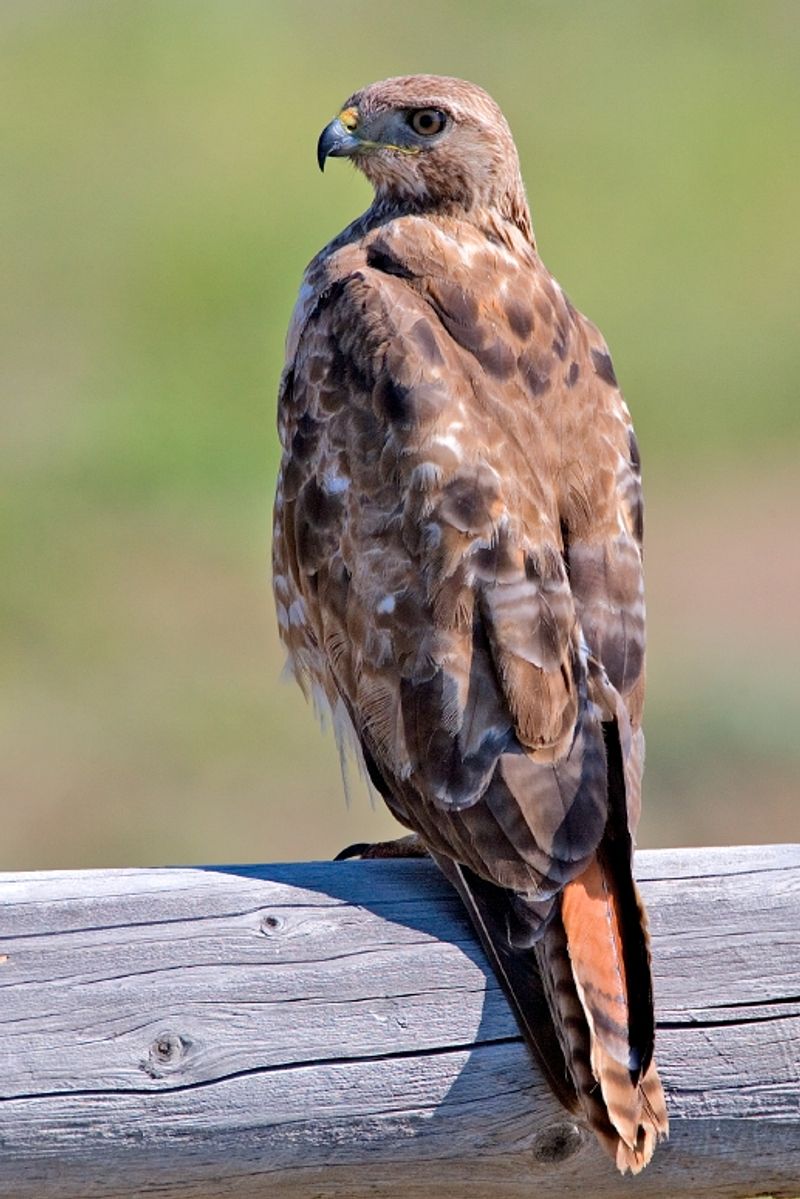
The red-tailed hawk is a bird of prey that inhabits a wide range of habitats throughout North America. It can be found as far north as Alaska and northern Canada and as far south as Panama and the West Indies.
It is one of the most common members of the Buteo genus, both in North America and worldwide. The red-tailed hawk is a medium-sized bird with a wingspan of up to four feet.
Its most distinguishing feature is its long tail, which is usually red, although it can range from light to dark brown. It has a dark head and upper body, with a lighter-colored breast.
The red-tailed hawk feeds mainly on small mammals, such as mice and voles, but it will also eat insects, reptiles, amphibians, and carrion. The red-tailed hawk is a highly adaptable bird, able to thrive in open woodlands, grasslands, agricultural fields, deserts, and even suburban areas.
It builds large stick nests in trees or on cliff ledges, and will often reuse the same nest for multiple years.
During the spring and summer, red-tailed hawks form monogamous breeding pairs and can be seen in courtship flight displays, where the male will soar and dive, while the female circles and calls.
The red-tailed hawk is a majestic bird that is a common sight throughout North America. Its ability to thrive in a variety of habitats and its impressive courtship displays make it an interesting species to observe.
| Kingdom | Animalia |
| Phylum | Chordata |
| Class | Aves |
| Order | Accipitriformes |
| Family | Accipitridae |
| Genus | Buteo |
| Species | B. jamaicensis |
2. Red-Shouldered Hawk
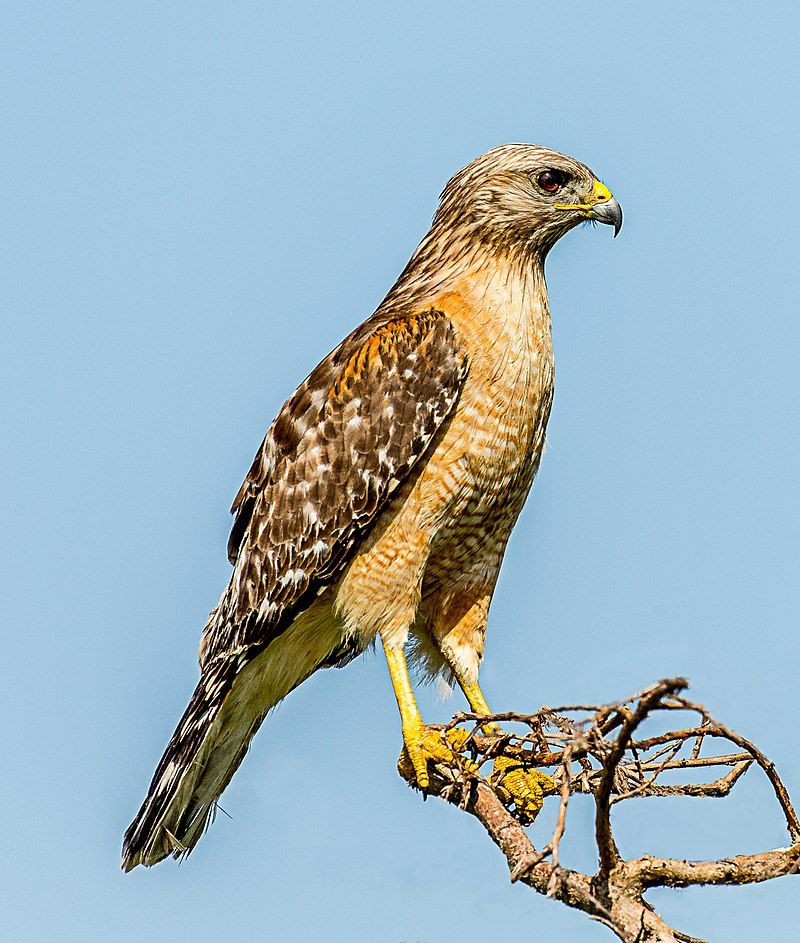
The red-shouldered hawk is a species of buteo, a type of raptor, of medium size. It has a large range that covers much of eastern North America, as well as the coast of California and parts of northern and northeastern-central Mexico.
This species is a permanent resident within its range, meaning that it does not migrate away from its home range. However, individuals from the northern parts of its range tend to migrate in the winter, usually making their way to central Mexico.
This species is common throughout its range, and its populations are considered stable.
| Kingdom | Animalia |
| Phylum | Chordata |
| Class | Aves |
| Order | Accipitriformes |
| Family | Accipitridae |
| Genus | Buteo |
| Species | B. lineatus |
3. Cooper’s Hawk
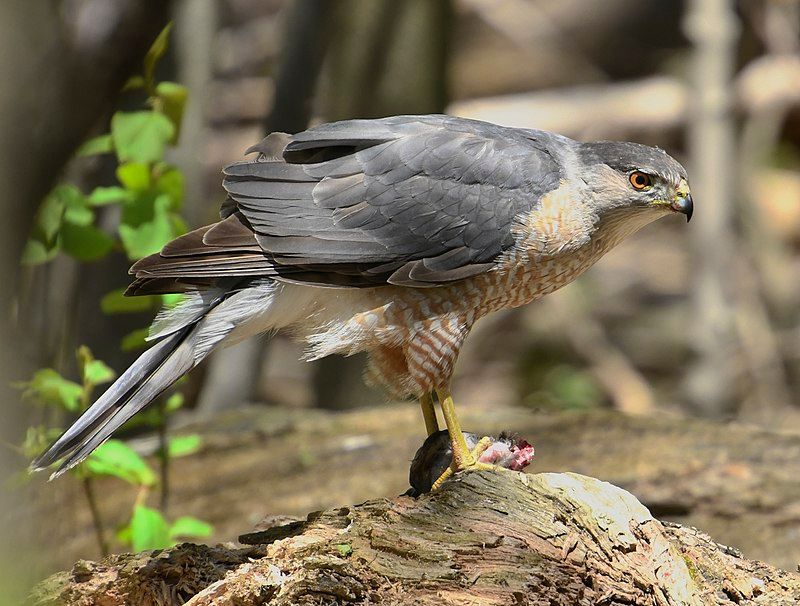
Cooper’s hawk is a species of hawk that is native to North America. It is found in a wide range of habitats across the continent, from southern Canada all the way down to Mexico. This species of hawk is medium-sized, with a wingspan of between 28 and 35 inches.
It has a distinctive silhouette, with a long tail and rounded wings. Its coloring is typically a dark brown on the back and head while the rest of its body is a lighter brown. The chest is often streaked with white and it has a light eyebrow line above its eyes.
Cooper’s hawk is a powerful and agile hunter, capable of catching small birds and mammals in mid-flight. It is a highly adaptable bird, able to inhabit both urban and rural areas and even nest in backyards.
Its conservation status is currently listed as Least Concern, as its populations are stable across North America.
| Kingdom | Animalia |
| Phylum | Chordata |
| Class | Aves |
| Order | Accipitriformes |
| Family | Accipitridae |
| Genus | Accipiter |
| Species | A. cooperii |
4. Steller’s Jay
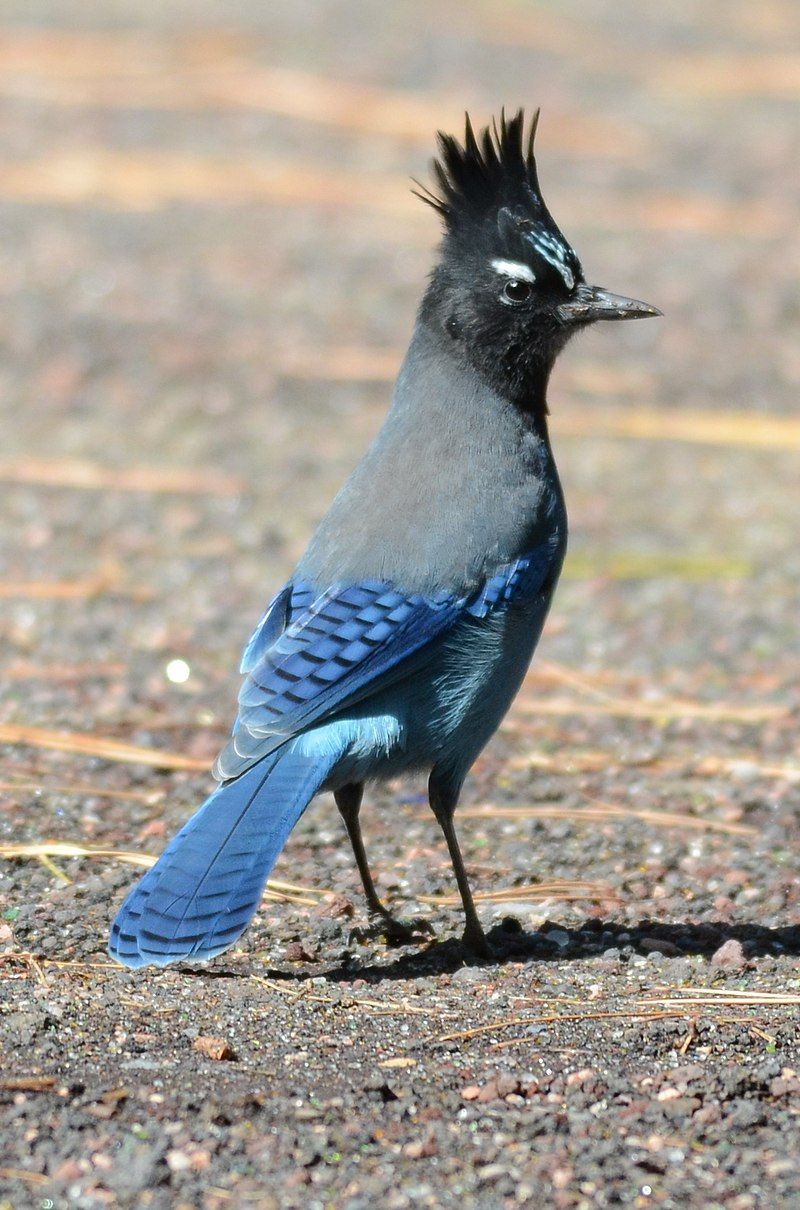
Steller’s jay is a beautiful, colorful bird native to western North America and the mountains of Central America. It is part of the crow family, Corvidae, and is closely related to the blue jay found in eastern North America.
Steller’s jay is identified by its bright blue head, wings, and tail, and its grayish-brown back and chest. It has a black bill, white throat, and a distinctive crest on the top of its head.
The Steller’s jay stands out due to its unique call, which is a loud and harsh “jay-jay”. The Steller’s jay is the only crested jay west of the Rocky Mountains, which makes it a rare sight in the region.
It is an omnivore, meaning it eats both plants and animals and is known to eat acorns, insects, eggs, and small animals such as lizards. It also eats fruits, berries, nuts, and seeds.
It builds its nest in high trees and they are usually quite elaborate, containing sticks, moss, and bark. The Steller’s jay is an important part of the western North American and Central American ecosystems.
It helps to pollinate plants and disperse seeds, as well as provide food for other animals in the area. Its bright colors and vibrant call are a welcome sight in the wild and the Steller’s jay is a beloved bird among nature-lovers.
| Kingdom | Animalia |
| Phylum | Chordata |
| Class | Aves |
| Order | Passeriformes |
| Family | Corvidae |
| Genus | Cyanocitta |
| Species | C. stelleri |
5. Red-Winged Blackbird
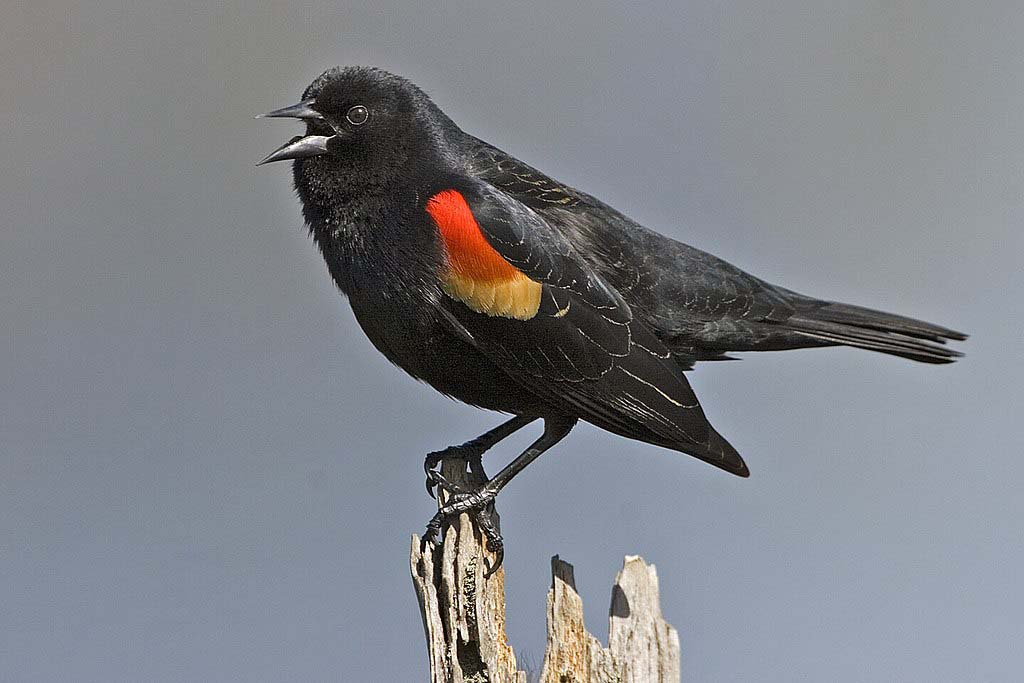
Source: Wikipedia
The red-winged blackbird is a type of bird that belongs to the family Icteridae. It is a passerine bird, which is a type of perching bird that has adapted to living in a wide variety of habitats.
This species of bird can be found throughout most of North America and much of Central America. It is known for its distinctive red and yellow plumage, which is slightly different between the male and female of the species.
The male has bright red and yellow shoulder patches, while the female has brownish-red shoulder patches. Both sexes have black bodies with yellow beaks and dark eyes.
The red-winged blackbird can be found in open areas such as meadows, grasslands, marshes, and agricultural fields. It feeds mainly on insects, seeds, and berries, and its diet changes with the season.
The red-winged blackbird is an important species for the ecosystems in which it lives, providing food for other animals and helping to control the insect population.
| Kingdom | Animalia |
| Phylum | Chordata |
| Class | Aves |
| Order | Passeriformes |
| Family | Icteridae |
| Genus | Agelaius |
| Species | A. phoeniceus |
6. Western Grebe
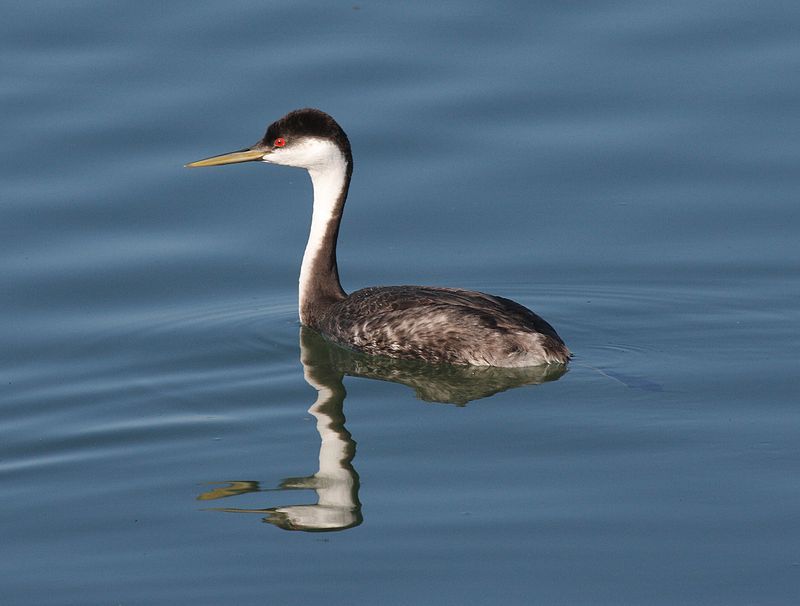
The western grebe is a species of water bird that belongs to the grebe family. It is widely known by different folk names such as “dabchick”, “swan grebe”, and “swan-necked grebe”.
These names come from the bird’s physical characteristics, such as its long, slender neck which is reminiscent of a swan’s neck. It is generally found in areas of fresh or saltwater and feeds on a variety of aquatic organisms.
The western grebe is quite a large bird, with a length of about 20 inches and a wingspan of about 39 inches. Its breeding plumage is mainly black and white, with a long, white neck and a black head and back. The underparts are white, and the bill is black.
During the breeding season, the bill turns orange-yellow and the eyes become red. The western grebe is a social bird, often seen in pairs or in small flocks. It is an excellent swimmer, using its feet to propel itself through the water.
It is a graceful bird, and its courtship displays are beautiful to watch. The western grebe is a fascinating species of bird, and it is an important part of the aquatic ecosystem.
| Kingdom | Animalia |
| Phylum | Chordata |
| Class | Aves |
| Order | Podicipediformes |
| Family | Podicipedidae |
| Genus | Aechmophorus |
| Species | A. occidentalis |
7. Golden-Crowned Sparrow
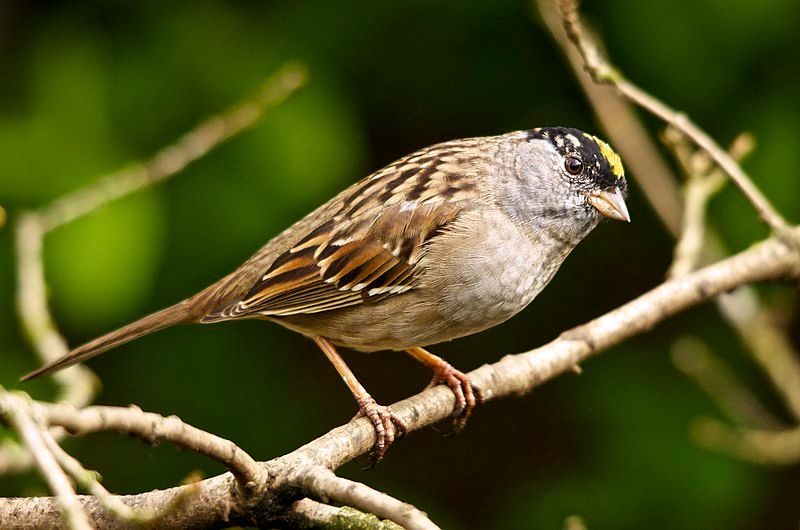
The Golden-Crowned Sparrow is a species of bird that is found in the western part of North America. It is a large bird, with a wingspan of up to 8 inches, and a body length of around 6 inches.
It is primarily greyish-brown in color, with a yellowish-buff throat, and a black-and-white striped crown on its head. The bird is often seen foraging on the ground, and its diet includes seeds, berries, and insects.
These birds are monogamous, meaning that they form long-term pair bonds with their mates. They typically nest in trees or shrubs, building a cup-shaped nest made of grass and other vegetation. The female lays two to five eggs, which are incubated by both sexes.
The Golden-Crowned Sparrow is not considered threatened, however, it is facing increasing pressure from habitat loss due to deforestation and urban sprawl.
| Kingdom | Animalia |
| Phylum | Chordata |
| Class | Aves |
| Order | Passeriformes |
| Family | Passerellidae |
| Genus | Zonotrichia |
| Species | Z. atricapilla |
8. Mourning Dove
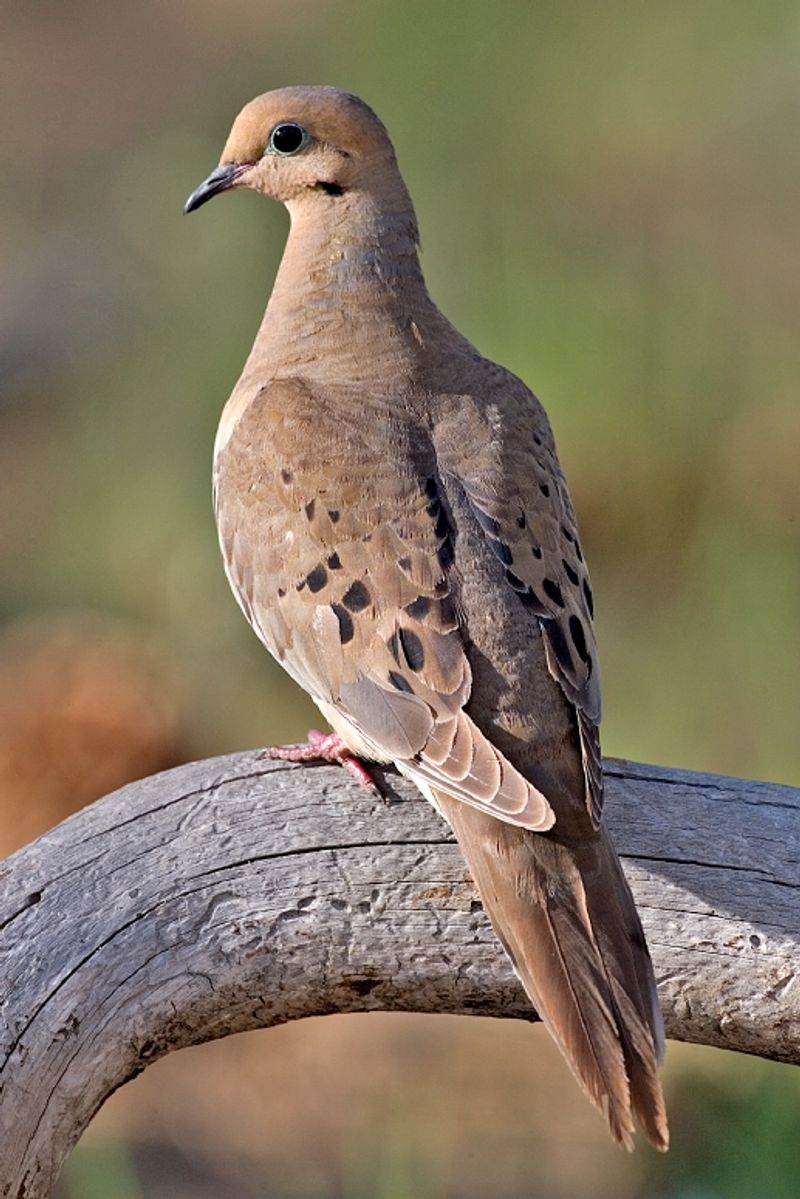
The mourning dove is a species of bird belonging to the family Columbidae, commonly known as doves. It is also known by many other names, such as the American mourning dove, the rain dove, and colloquially as the turtle dove.
In the past, it was referred to as the Carolina pigeon or Carolina turtledove. The mourning dove is a medium-sized, slender bird with a wingspan of up to 36 inches. Its plumage is grayish brown with black spots, and its tail is long and pointed.
The bird has a soft, mournful call, which gives it its common name. It can be found in open fields, woodlands, and around human settlements, often nesting in trees or on the ground. The mourning dove feeds mainly on seeds and grains, although it will also eat insects and fruits.
It is a social species, often seen in pairs or small flocks. It typically nests in trees or shrubs, laying two white eggs per clutch.
The female incubates the eggs for two weeks, while the male feeds the female. The mourning dove is a widely distributed species, found throughout much of North and South America.
It is a common bird in parts of the United States and Canada and is considered a game bird in many states. It is also an important species for hunters, who often hunt the bird for sport.
Its population is currently stable, although its numbers have declined due to habitat destruction and other human activities.
| Kingdom | Animalia |
| Phylum | Chordata |
| Class | Aves |
| Order | Columbiformes |
| Family | Columbidae |
| Genus | Zenaida |
| Species | Z. macroura |
9. Western Gull
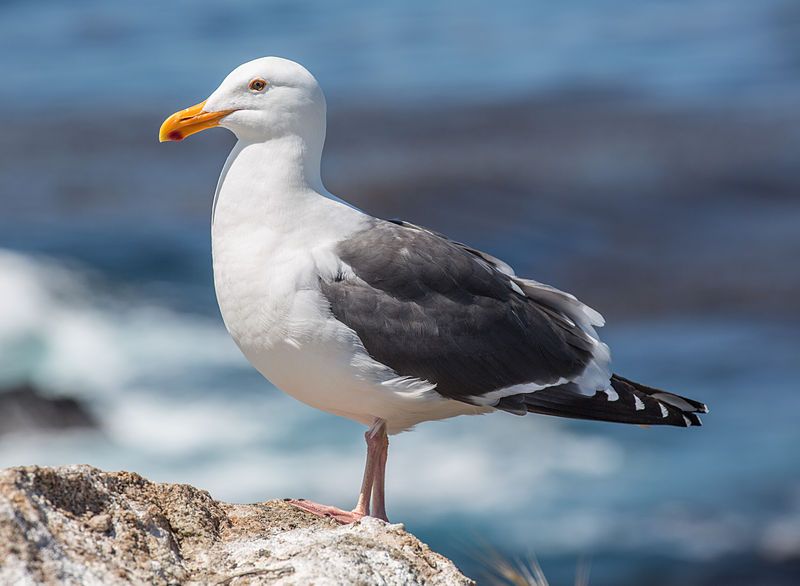
The western gull is a large bird that can be found living on the west coast of North America and the Pacific Ocean. It has a white head, and its range extends from British Columbia, Canada, to Baja California, Mexico.
This species of gull was once thought to be the same species as the yellow-footed gull, which is found in the Gulf of California. However, recent studies have determined that the western gull is in fact a distinct species, separate from the yellow-footed gull.
The two species have different characteristics and geographical ranges, and they do not interbreed.
The western gull is a large, white-headed species that is adapted to living on the coasts of North America and the Pacific Ocean, while the yellow-footed gull is a smaller species, with yellow feet, that lives in the Gulf of California.
| Kingdom | Animalia |
| Phylum | Chordata |
| Class | Aves |
| Order | Charadriiformes |
| Family | Laridae |
| Genus | Larus |
| Species | L. occidentalis |
10. Turkey Vulture
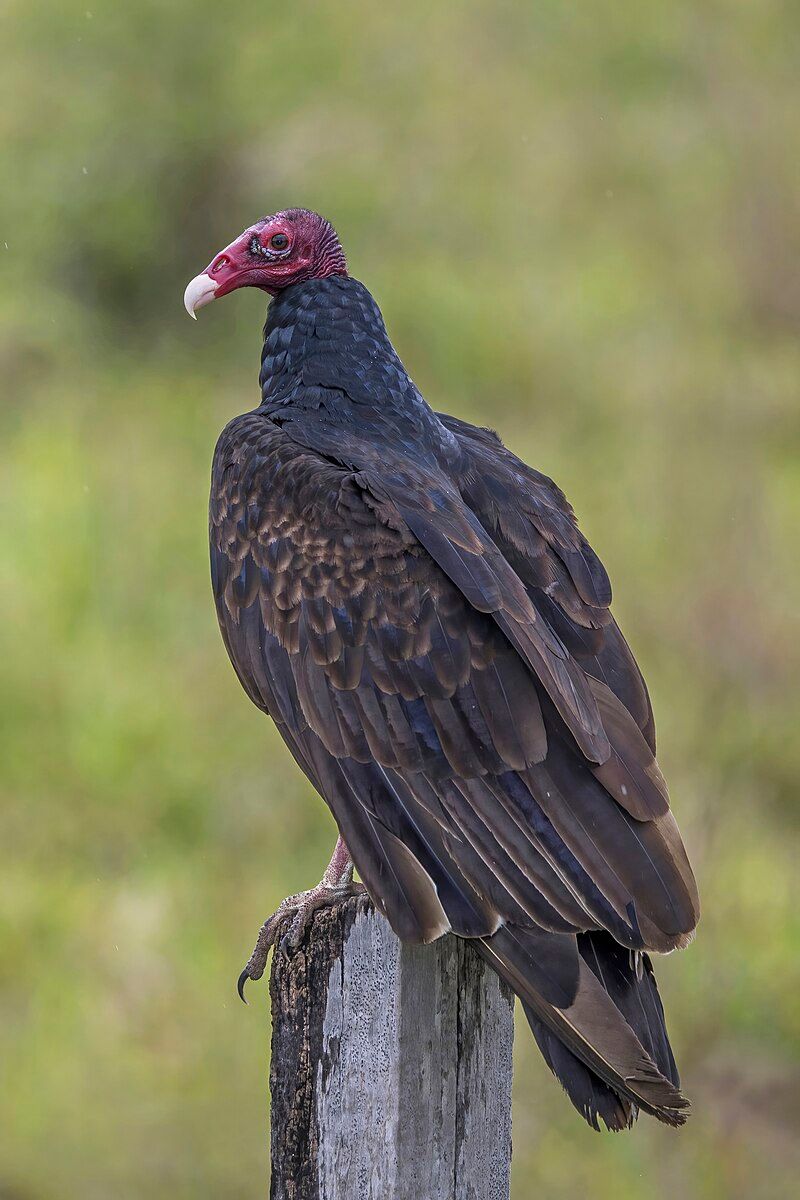
The turkey vulture is a species of vulture that is found throughout the Americas. It is the most common type of vulture in the New World and it is found from southern Canada all the way to the southernmost tip of South America.
It belongs to the genus Cathartes and the family Cathartidae, which are both groups that contain large, scavenging birds. The turkey vulture is a large bird with a wingspan of up to six feet in size. It has a black body and head, with a red bald head and yellow bill.
Its wings and tail are black, with the underside of its wings having a silvery-white color. Its feet are yellow, and its legs are short and weak. The turkey vulture is mainly a scavenger, feeding on carrion, roadkill, and other dead animals.
It has a keen sense of smell which helps it find food, as it is able to detect the scent of dead animals from a distance. They are also known to feed on eggs, as well as small mammals and reptiles.
The turkey vulture is a social species and often roosts and forages in large groups. They are also known to migrate long distances, traveling south in the winter and north in the summer.
They are important to the environment as they help to clean up the carrion, preventing the spread of disease.
| Kingdom | Animalia |
| Phylum | Chordata |
| Class | Aves |
| Order | Accipitriformes |
| Family | Cathartidae |
| Genus | Cathartes |
| Species | C. aura |
11. White-Crowned Sparrow
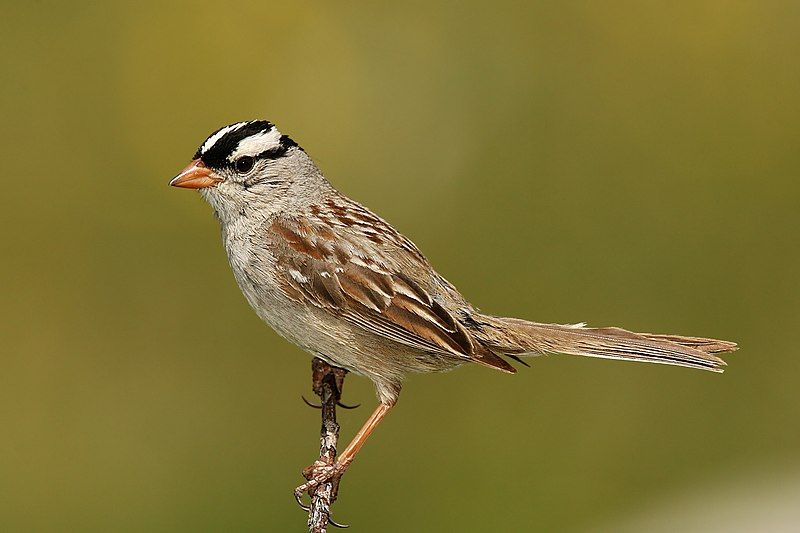
The white-crowned sparrow is a type of bird that is found in North America. It is a member of the New World sparrow family, which is known for its wide variety of species.
The white-crowned sparrow is a medium-sized bird, with a grey face and black and white streaking on the upper head. This streaking is what makes the white-crowned sparrow easily distinguishable from other birds in the same family.
The white-crowned sparrow is an important part of the North American ecosystem, as it plays an important role in helping to maintain the balance in the environment. These birds can be found living in open woodlands, fields, and even in gardens.
They feed on both insects and seeds, making them a valuable source of food for other animals in the area. They are also known to be very social, gathering in large flocks in the winter months to migrate south.
The white-crowned sparrow is an important species in the North American continent, and its presence helps to maintain the balance of the ecosystem.
| Kingdom | Animalia |
| Phylum | Chordata |
| Class | Aves |
| Order | Passeriformes |
| Family | Passerellidae |
| Genus | Zonotrichia |
| Species | Z. leucophrys |
12. Wood Duck
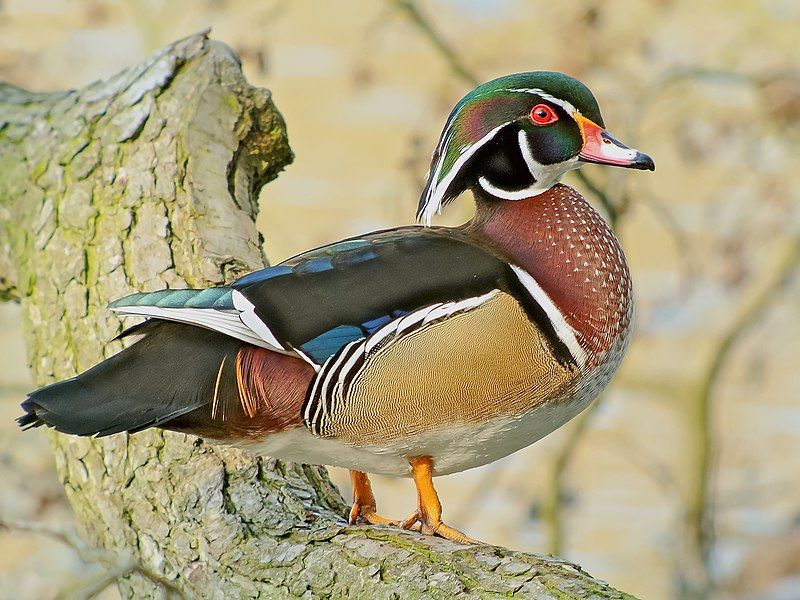
The wood duck, or Carolina duck, is a species of perching duck that is native to North America. It is a medium-sized waterfowl, typically measuring between 17 and 20 inches in length. The plumage of the wood duck is striking, with distinct markings on the head, wings, and body.
The male, or drake, wood duck is especially colorful, with a distinctive chestnut-colored head, glossy green wings, and white and black stripes on the chest and flanks. The wood duck is a highly sought-after game bird, and is one of the most popular ducks for hunters to pursue.
It is also a popular species among bird watchers, due to its attractive plumage and wide distribution across North America. The wood duck is a highly adaptable species and can be found in a variety of habitats, from wetlands to wooded forests.
Its diet consists mainly of aquatic insects, mollusks, and vegetation such as seeds and grains.
| Kingdom | Animalia |
| Phylum | Chordata |
| Class | Aves |
| Order | Anseriformes |
| Family | Anatidae |
| Genus | Aix |
| Species | A. sponsa |
13. Elegant Tern
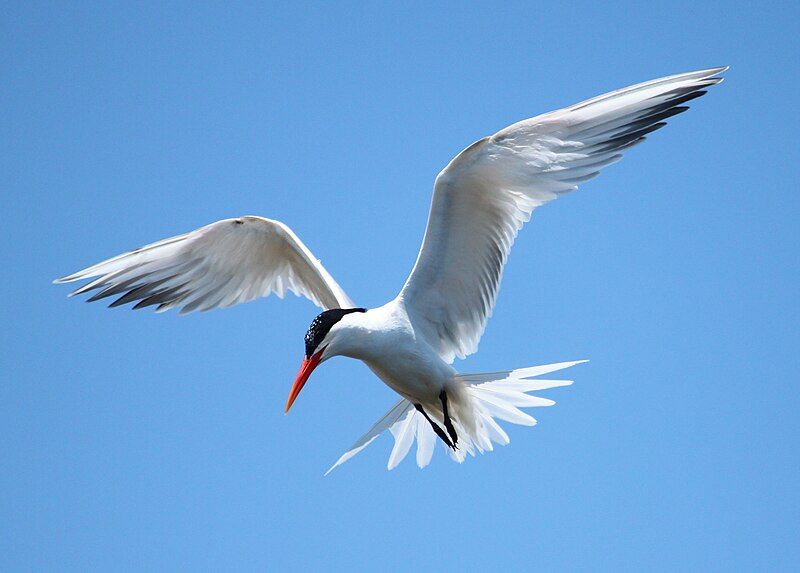
The elegant tern is a species of seabird belonging to the family Laridae. It is found along the Pacific coasts of the southern United States and Mexico, where it breeds during the summer months.
During the winter months, these birds migrate south to Peru, Ecuador and Chile, where they winter before returning to their breeding grounds. The elegant tern is a graceful bird, with white feathers and a black crown. Its wings are long and pointed, and its tail is forked.
It feeds on small fish, crustaceans and insects, which it catches by dipping down to the surface of the water. The elegant tern is an important part of the coastal ecosystem.
It helps to control the populations of fish, crustaceans and insects, which in turn helps to keep the balance of the food chain.
Additionally, it provides important nutrients to the local environment when it defecates, thus helping to maintain the health of the local ecology. Overall, the elegant tern is an important species of bird, both ecologically and aesthetically.
Its graceful movements and striking appearance make it a pleasing sight to behold.
Its presence along the Pacific coasts of the southern United States and Mexico, as well as its annual migration to Peru, Ecuador and Chile, make it a valuable species to both local and international populations.
| Kingdom | Animalia |
| Phylum | Chordata |
| Class | Aves |
| Order | Charadriiformes |
| Family | Laridae |
| Genus | Thalasseus |
| Species | T. elegans |
14. Western Scrub Jay
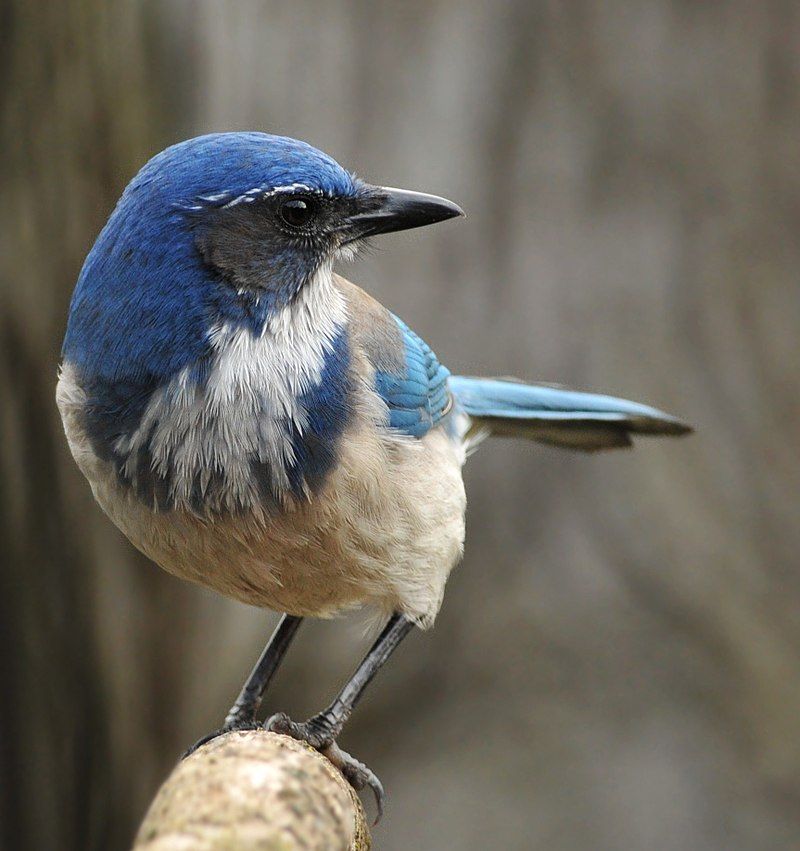
The California scrub jay is a species of bird native to western North America. It is found in a variety of environments, ranging from coastal scrubland to wooded mountain areas.
It is found from southern British Columbia down through California and western Nevada, extending as far west as the Sierra Nevada mountain range. The California scrub jay is a colorful bird, with a blue head and wings, a white breast, and a gray back and tail.
It is highly adaptable and can survive in a variety of habitats, from dense forests to open grasslands. Its diet consists mainly of insects, but it also eats a variety of other food items, such as berries, nuts, and seeds.
It often forages in flocks and is known for its loud, raucous calls. The California scrub jay is an important part of the North American ecosystem, and its presence is a sign of healthy habitat.
| Kingdom | Animalia |
| Phylum | Chordata |
| Class | Aves |
| Order | Passeriformes |
| Family | Corvidae |
| Genus | Aphelocoma |
| Species | A. californica |
15. Killdeer
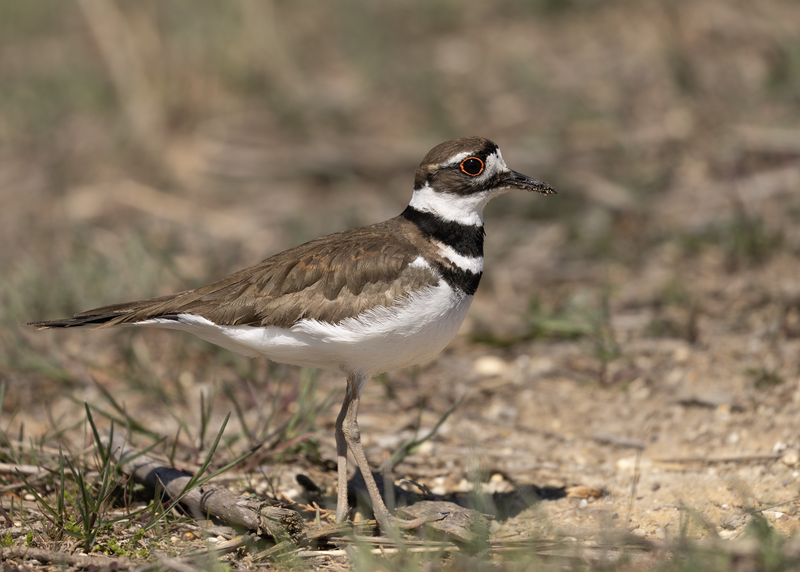
The Killdeer is a type of large plover that is found in the Americas. It is easily recognizable by its shrill two-syllable call, which can often be heard in the area.
The bird was first officially described and given its current scientific name in 1758 by Carl Linnaeus in the 10th edition of his Systema Naturae. Additionally, three subspecies of the killdeer are described in scientific literature.
The killdeer is a medium-sized wading bird that is mainly found in North and Central America, though some populations can be found as far south as Brazil. It typically has a grayish-brown back, white underside, and black bands across its wings.
It has a distinctive black patch on its chest, as well as a white ring around its neck. The killdeer’s diet consists mainly of insects, worms, and other small invertebrates. The Killdeer is an important indicator species that helps to monitor the health of the environment.
It is considered to be a medium-sized shorebird and is often found near wetlands, rivers, and other water sources. In addition to its scientific name, it is also referred to by a variety of other names including the chipping plover, the killdeer plover, and the killdee.
The Killdeer is an important part of the ecosystem, as its presence often indicates a healthy environment. Its shrill two-syllable call can be heard from a distance and serves as a warning to predators.
Its scientific name and three subspecies were first described and identified by Carl Linnaeus in the 10th edition of his Systema Naturae. It is a fascinating bird that deserves to be appreciated and protected.
| Kingdom | Animalia |
| Phylum | Chordata |
| Class | Aves |
| Order | Charadriiformes |
| Family | Charadriidae |
| Genus | Charadrius |
| Species | C. vociferus |
16. American Robin
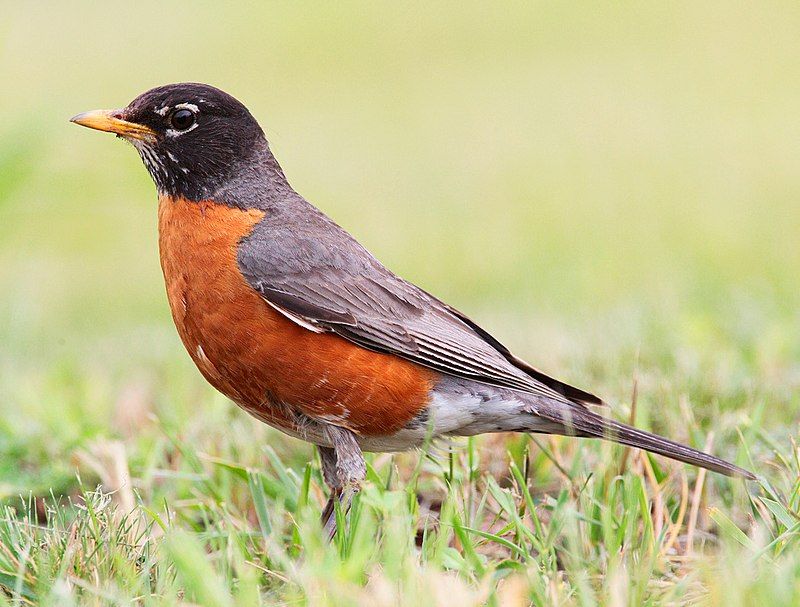
The American robin is a migratory bird that is part of the true thrush genus and the wider thrush family, scientifically known as Turdidae. It is named after the European robin due to its reddish-orange breast, though the two species are not closely related.
The European robin actually belongs to the Old World flycatcher family. This is likely because of the similarity in color of the two birds’ breasts. The American robin is found throughout North America, while the European robin is mainly found in Europe, Asia, and Africa.
The American robin is a popular backyard bird, often seen hopping around lawns or perched atop fences. It is a great source of joy for many bird watchers and is a valuable part of the ecosystem.
| Kingdom | Animalia |
| Phylum | Chordata |
| Class | Aves |
| Order | Passeriformes |
| Family | Turdidae |
| Genus | Turdus |
| Species | T. migratorius |
17. Oak Titmouse
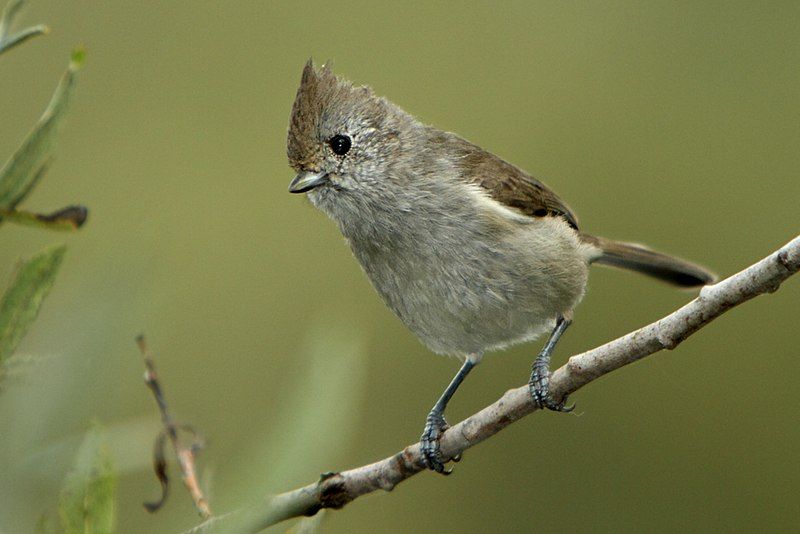
The oak titmouse is a species of bird in the family Paridae, which is commonly known as the tit family.
The American Ornithologists’ Union (AOU) conducted a study in 1996 and concluded that the plain titmouse could be divided into two distinct species: the oak titmouse and the juniper titmouse. This was based on differences in their songs, preferred habitats, and genetic makeup.
The oak titmouse is known to inhabit oak and pine forest habitats, with some populations living in chaparral and in urban areas. Their songs are a series of low-pitched, buzzy notes that are repeated multiple times.
Genetically, the oak titmouse differs from the juniper titmouse by having a shorter wing chord, a longer bill, and a longer tail. The oak titmouse is a small bird, with a length of around 5 inches.
They are grayish-brown on top and white underneath, with a grayish-white head and a short crest. They have a black patch on the back of their heads and a white line that runs from their eyes to their beaks.
They have a white line from the base of their bills to the sides of their necks. They also have a white line down their throats and a white line around their eyes.
The oak titmouse is a common bird that can be found throughout much of North America, from southern Canada down to northern Mexico. They are usually found in small flocks in woodlands, parks, and gardens.
They feed on insects, fruit, and seeds, which they find in trees or on the ground. Overall, the oak titmouse is a species of bird that has been identified as separate from the plain titmouse due to its distinct physical characteristics, song, and preferred habitat.
It is a common bird that can be seen in many areas throughout North America.
| Kingdom | Animalia |
| Phylum | Chordata |
| Class | Aves |
| Order | Passeriformes |
| Family | Paridae |
| Genus | Baeolophus |
| Species | B. inornatus |
18. Long-Billed Curlew
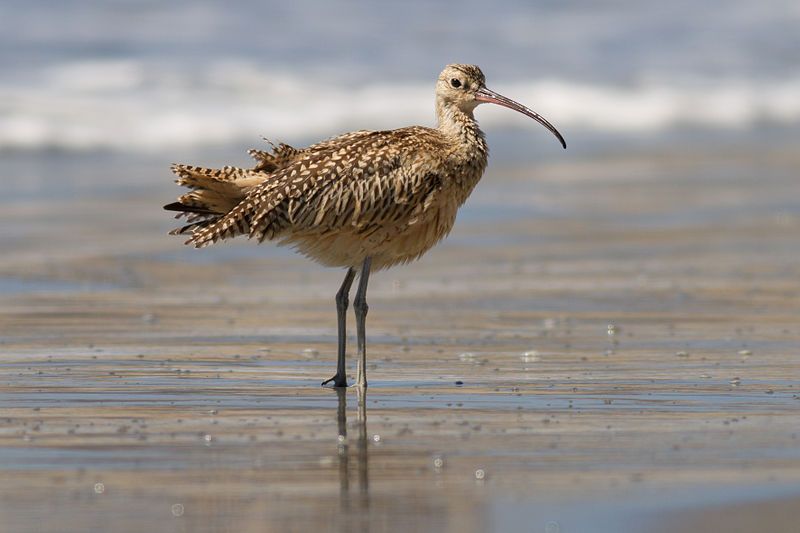
The long-billed curlew is a large shorebird found in North America. It belongs to the family Scolopacidae, and is sometimes referred to as the “sicklebird” or the “candlestick bird”.
This species breeds in central and western North America, and migrates to more southern and coastal areas for the winter. Its long bill is one of its most distinctive features, and it is used to probe the ground for food.
The long-billed curlew feeds mainly on insects, worms, and other invertebrates. It also eats some seeds, berries, and other plant material.
The long-billed curlew is an important part of the North American avian ecosystem, and its population numbers have been decreasing in recent years due to a variety of factors including habitat loss and human activity.
For this reason, it is important to protect and preserve its critical habitats in order to ensure its continued survival.
| Kingdom | Animalia |
| Phylum | Chordata |
| Class | Aves |
| Order | Charadriiformes |
| Family | Scolopacidae |
| Genus | Numenius |
| Species | N. americanus |
19. Least Sandpiper
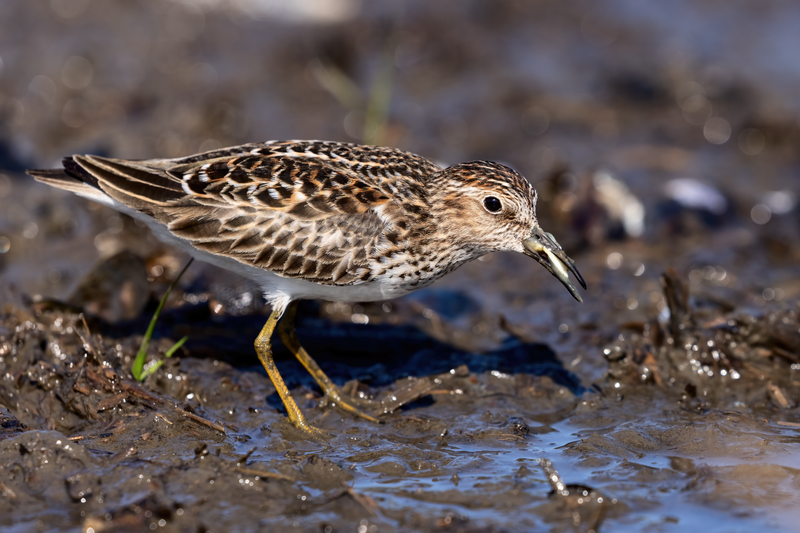
The least sandpiper is a type of shorebird that is distinguished by its small size. It belongs to the genus Calidris, which is derived from Ancient Greek; the term used by Aristotle for describing grey-colored birds found near bodies of water.
The species name minutilla translates to “very small” in Medieval Latin, making it a fitting name for this diminutive shorebird. The least sandpiper is an important part of its ecosystem, as it helps to keep insect populations in check.
It also serves as a important food source for predators such as hawks and owls. In addition to its ecological significance, the least sandpiper is an important part of the cultural history of many regions, as it has been used in artwork and literature for centuries.
| Kingdom | Animalia |
| Phylum | Chordata |
| Class | Aves |
| Order | Charadriiformes |
| Family | Scolopacidae |
| Genus | Calidris |
| Species | C. minutilla |
20. Rock Dove
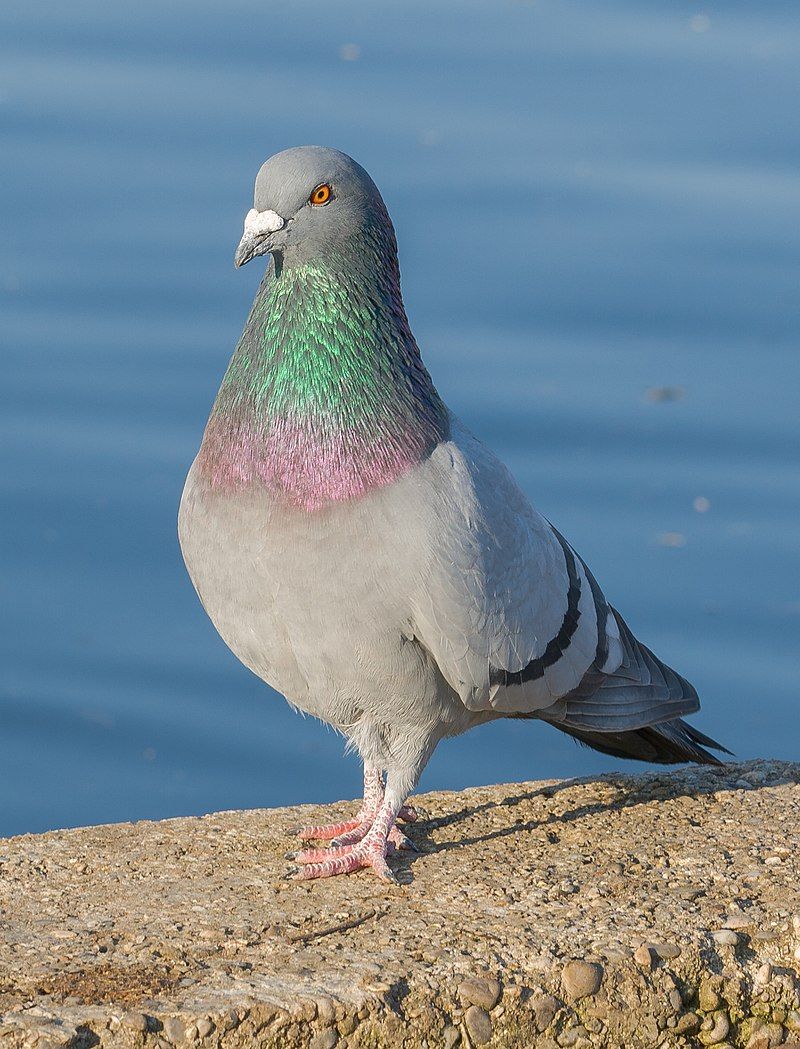
The rock dove, rock pigeon, or common pigeon is a species of bird belonging to the Columbidae family, and it is often referred to simply as the “pigeon”. It is believed that the domestic pigeon descended from this species, which is why it is so widely kept as a pet.
However, many domesticated pigeons have managed to escape and join the wild, which has caused an increase in the population of feral pigeons around the world.
This is due to the fact that domesticated pigeons are able to adapt to their environment quickly, and can often survive better than their wild relatives in urban and suburban areas.
The feral pigeons are usually found in large numbers in cities, where they are able to scavenge food from the ground and from buildings, as well as from garbage cans.
The feral pigeon populations have been known to become quite large and can become a nuisance to both people and other animals.
| Kingdom | Animalia |
| Phylum | Chordata |
| Class | Aves |
| Order | Columbiformes |
| Family | Columbidae |
| Genus | Columba |
| Species | C. livia |
Conclusion
The birds of Tiburon are a diverse and fascinating group of species, and they play an important role in the local environment. From the iconic great blue heron to the hummingbirds that flit through the air, these birds are an important part of the Tiburon experience.
Whether you’re a bird-watcher, a nature enthusiast, or just someone who enjoys the beauty of the outdoors, Tiburon and its birds are worth exploring.